
Blooms that change colors more often than a chameleon

Dandy Man Color Wheel® rhododendron (Rhododendron ‘NCRX1’)
Zones: 5–9
Size: 4 to 6 feet tall and wide
Conditions: Full sun to partial shade; moist, acidic, well-drained soil
Native range: Hybrid
“Color Wheel” is an appropriate common name for this rhodie, which starts out with red buds that slowly unfurl into ruffled pinkish-white blooms. As they age, the blossoms turn bright white. The trusses sometimes hold more than six individual flowers, making for an impressive, bloom-tastic dwarf, evergreen shrub.
Introduced by: Proven Winners® Color Choice®
Another dwarf evergreen with impressive flower power
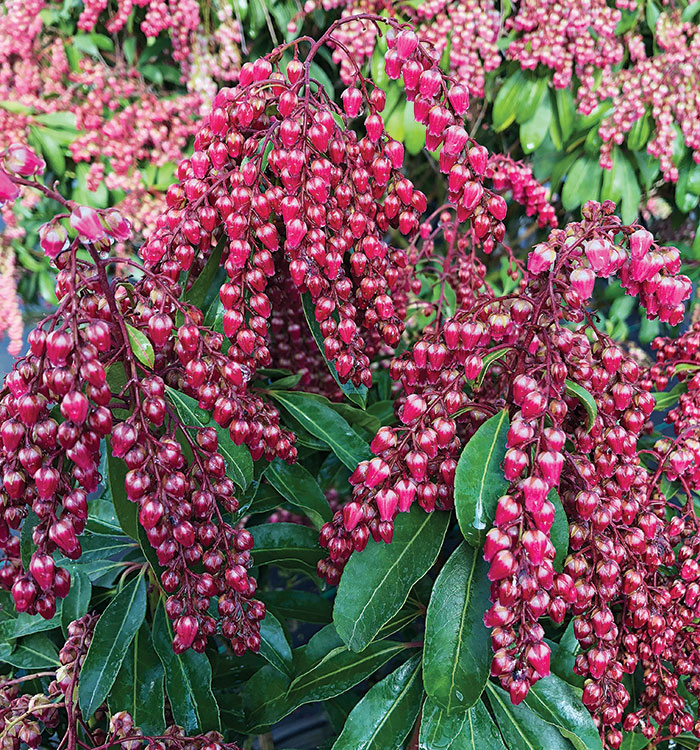
Interstella® pieris (Pieris japonica ‘FARROWPJRF’)
Zones: 5–8
Size: 3 to 4 feet tall and wide
Conditions: Partial shade; moist, well-drained soil
Native range: China, Taiwan, Japan
If you know pieris, you know they are typically adorned with chains of fragrant white blooms in early spring. You can expect the same plethora of flowers with this small cultivar, but the bell-shaped blossoms are an intense dark pink—nearly red to some eyes.
Introduced by: Proven Winners® Color Choice®
Calling all pollinators!

Love Child™ sweetspire (Itea virginica ‘Bailteaone’)
Zones: 6–9
Size: 3 to 4 feet tall and wide
Conditions: Full sun; moist, well-drained soil
Native range: Southeastern United States
Sweetspire is a gem of a native shrub, attracting a hoard of beneficial insects to its fragrant white blossoms each spring. The only problem is that the straight species gets big—too big, in fact, for many average-size gardens. Love Child™ takes up half the space but attracts just as many pollinators. Now that’s a trait everyone, including Diana Ross, will love.
Introduced by: Bailey Nurseries
Disease resistant with a kaleidoscope of colors

Ringo® rose (Rosa ‘ChewBullseye’)
Zones: 4–8
Size: 3 to 4 feet tall and wide
Conditions: Full sun; moist, well-drained soil
Native range: Hybrid
It takes a lot for many gardeners (and garden editors) to get excited about a rose. However, Ringo® rose quickens the pulse without even trying. Its nonstop flowers are yellow with a deep pink center and slowly fade to peach then eventually white as they age, giving the shrub a multicolor appearance. Disease resistance is another bonus.
Introduced by: Proven Winners® Color Choice®
Same great tree, now in a smaller size

Tianshan® seven-son flower (Heptacodium miconioides ‘Minhep’)
Zones: 5–9
Size: 8 to 12 feet tall and 5 to 7 feet wide
Conditions: Full sun; moist, well-drained soil
Native range: China
Seven-son flower has long been a favorite of the Fine Gardening staff. It has glossy green leaves, trusses of white starry flowers (adored by pollinators), showy pink sepals that stick around long after the blooms have gone (right), and peeling silvery-taupe bark that defines the term “winter interest.” But the straight species is over 20 feet tall and is not suited to smaller spaces. Enter Tianshan®. This new gem keeps all the great traits we love about seven-son flower and puts them into a more manageable package.
Introduced by: Bailey Nurseries
Editor’s Tip: Pruning accentuated the legs. To get a better view of the amazing, multicolor peeling bark that seven-son flower has to offer, limb up the bottom branches of your tree to expose the trunks.
Orange plus yellow equals pure gold with this shrub
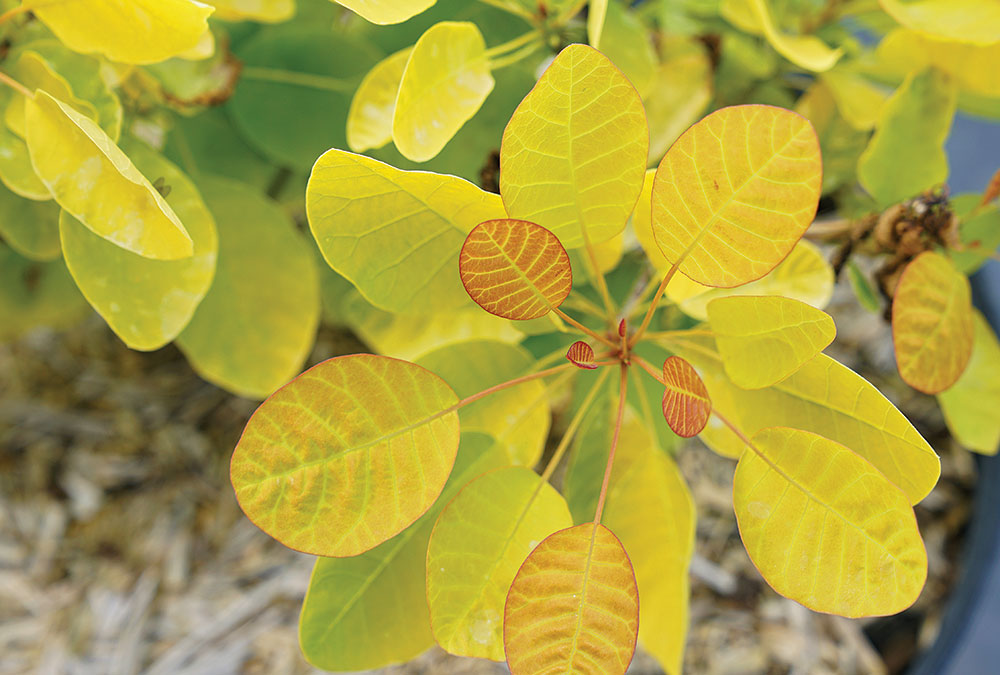
Winecraft Gold® smoke bush (Cotinus coggygria ‘MINCOJAU3’)
Zones: 5–8
Size: 4 to 6 feet tall and wide
Conditions: Full sun to partial shade; moist, well-drained soil
Native range: Japan
The new growth of this smoke bush emerges a bright orange before maturing to yellow. As summer progresses, the foliage eventually fades to a more chartreuse hue before giving way to clouds of whitish-pink plumes of flowers. Although still sizable, Winecraft Gold® stays a bit more compact than the straight species.
Introduced by: Proven Winners® Color Choice®
It’s tough, it’s unexpected, and we want a dozen

Iceberg Alley™ sageleaf willow (Salix candida ‘Jefberg’)
Zones: 2–6
Size: 5 feet tall and wide
Conditions: Full sun; moist soil
Native range: Japan
My goodness, are we ever excited about this shrub. If you’re looking for a tough-as-nails beauty that thrives in subzero temps and lean soil, behold this incredible willow discovered by the Memorial University of Newfoundland and Labrador Botanical Garden. Silver, sagelike foliage sprouts yellow and red catkins in spring. Move over pussy willow—there’s a prettier cousin in town.
Introduced by: Bailey Nurseries
Weird, wonderful, and a U.S. native

‘Precocious’ fevertree (Pinckneya bracteata ‘Precocious’)
Zones: 7–9
Size: 9 feet tall and wide
Conditions: Full sun to partial shade; moist, well-drained soil
Native range: Southeastern United States
If you’ve never heard of this tree before, you are not alone. Fortunately, the keen eyes at Plant Delights Nursery knew a winner when they saw it. Sometimes referred to as Georgia fever bark, this exceptionally floriferous cultivar was discovered as a chance seedling by the South Carolina Botanical Garden. The pink-white bracts appear at the tree tips in midspring. Pinckneya is also a host plant for butterflies, moths, and bees—and hummingbirds find it irresistible.
Introduced by: Plant Delights Nursery
It got an endorsement from woody-plant royalty
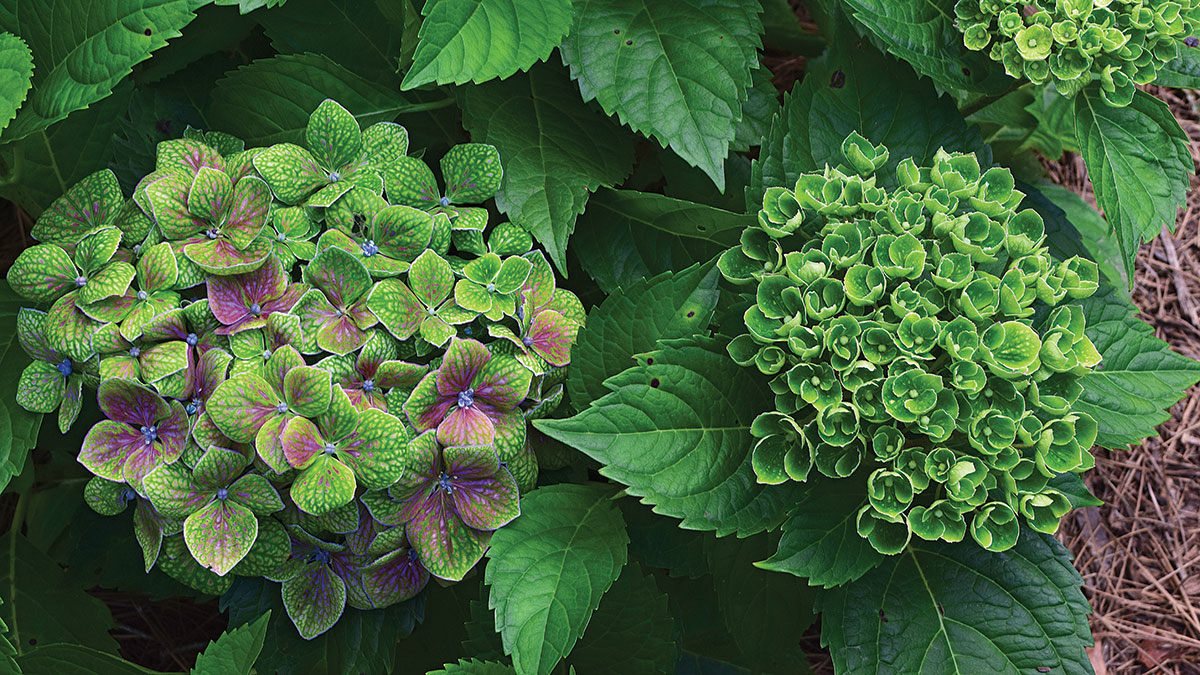
Froggie™ bigleaf hydrangea (Hydrangea macrophylla ‘COF HM2’)
Zones: 5–9
Size: 4 feet tall and wide
Conditions: Partial shade; moist, well-drained soil
Native range: Japan
When Michael Dirr—who basically wrote the bible on woody plants— sends an email gushing about a new plant, you take notice. In this case, he was touting the merits of Froggie™ bigleaf hydrangea, a new mophead hydrangea with unique flower coloration: green with rosy highlights or green with purple-blue accents. Tolerance to cold, drought, and heat round off its excellent attributes.
Introduced by: Cutting Edge Plants
Bees, butterflies, and big blooms—what more could you want?

Galactic Pink™ chaste tree (Vitex agnus-castus ‘Bailtextwo’)
Zones: 6–9
Size: 6 to 8 feet tall and wide
Conditions: Full sun; well-drained soil
Native range: Mediterranean, Asia
The blooms are so big on this new pink chaste tree that you’d swear it was a butterfly bush from a distance. The long panicles show up in early summer and persist into fall. Seldom will you see this plant not covered in bees and butterflies. As with all in this genus, well-drained soil and full sun are a must for the best-looking specimens.
Introduced by: Bailey Nurseries
Romance surrounds this rare colored rose

Pretty Polly® Lavender rose (Rosa ‘Zlepolthree’)
Zones: 4–9
Size: 2 feet tall and wide
Conditions: Full sun; moist, well-drained soil
Native range: Hybrid
The rarest color for a rose? That would be blue, which doesn’t exist. However, it is nearly as hard to find a purple rose. Pretty Polly® Lavender is a true light purple. Clusters of small, mini rosettes cover the stems in midsummer and last for weeks. The purple blossoms fade to blush and then white as they age, adding a touch more elegance to the bloom show. Good disease resistance, a compact form, and repeat blooming with deadheading are all great traits too.
Introduced by: Star® Roses & Plants
Staying cute and compact is its modus operandi

Matcha Ball® ash leaf spirea (Sorbaria sorbifolia* ‘Levgreen’)
Zones: 3–7
Size: 2 to 3 feet tall and 3 to 4 feet wide
Conditions: Full sun to partial shade; well-drained soil
Native range: Central and eastern Asia
Consider this the well-behaved cousin from a rowdy—albeit beautiful—family. If you’re worried about this ash leaf spirea spreading and suckering all over the place, don’t. Matcha Ball® stays cute and contained while providing awesome texture and color to the landscape, thanks to its ferny foliage. Red-orange new growth fades to yellow-green in summer before eventually turning gold in fall.
Introduced by: Bailey Nurseries
*See invasive alert below.
A classic tree, with better hardiness

Empress of China® dogwood (Cornus angustata ‘Elsbry’)
Zones: 6–9
Size: 15 to 18 feet tall and 13 to 15 feet wide
Conditions: Full sun to partial shade; moist, well-drained soil
Native range: Eastern Asia to western China
If you live in a Southern clime where dogwoods can struggle, this new option was bred with you in mind. Empress of China® thrives during periods of drought and in humid conditions too. Northern gardeners will find its blossoming power impressive as well, with each branch boasting upwards of 150 flowers, according to the breeders.
Introduced by: Plants Nouveau
*Invasive alert: Ash leaf spirea (Sorbaria sorbifolia)
This plant is considered invasive in ME, NH, and VT.
Please visit invasiveplantatlas.org for more information.
Danielle Sherry is the senior editor.






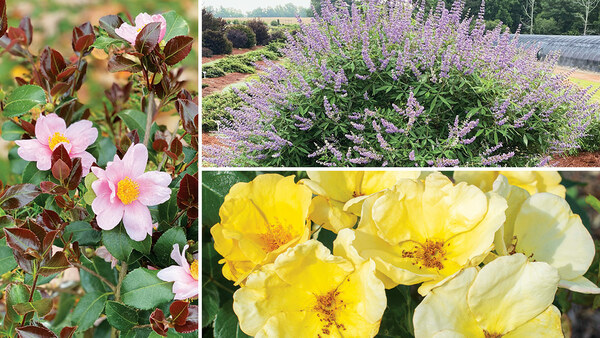
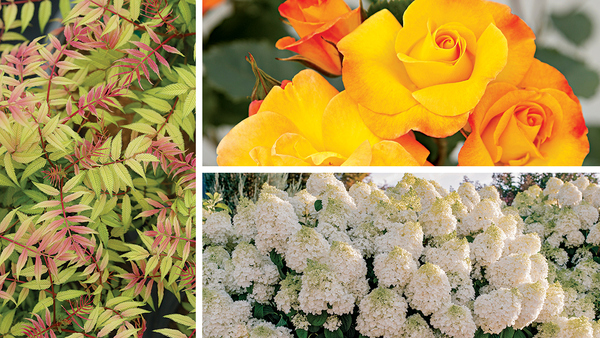














Comments
Hi friend, I love this post as I love to read about the flowers and I have my own nursery. For that, I always read about the latest technologies invented in the gardening area. BTW, I am a student and I have been searching for some help for my college writing work from eduburdie website. After that, I would like to read some more articles on the gardening.
Log in or create an account to post a comment.
Sign up Log in